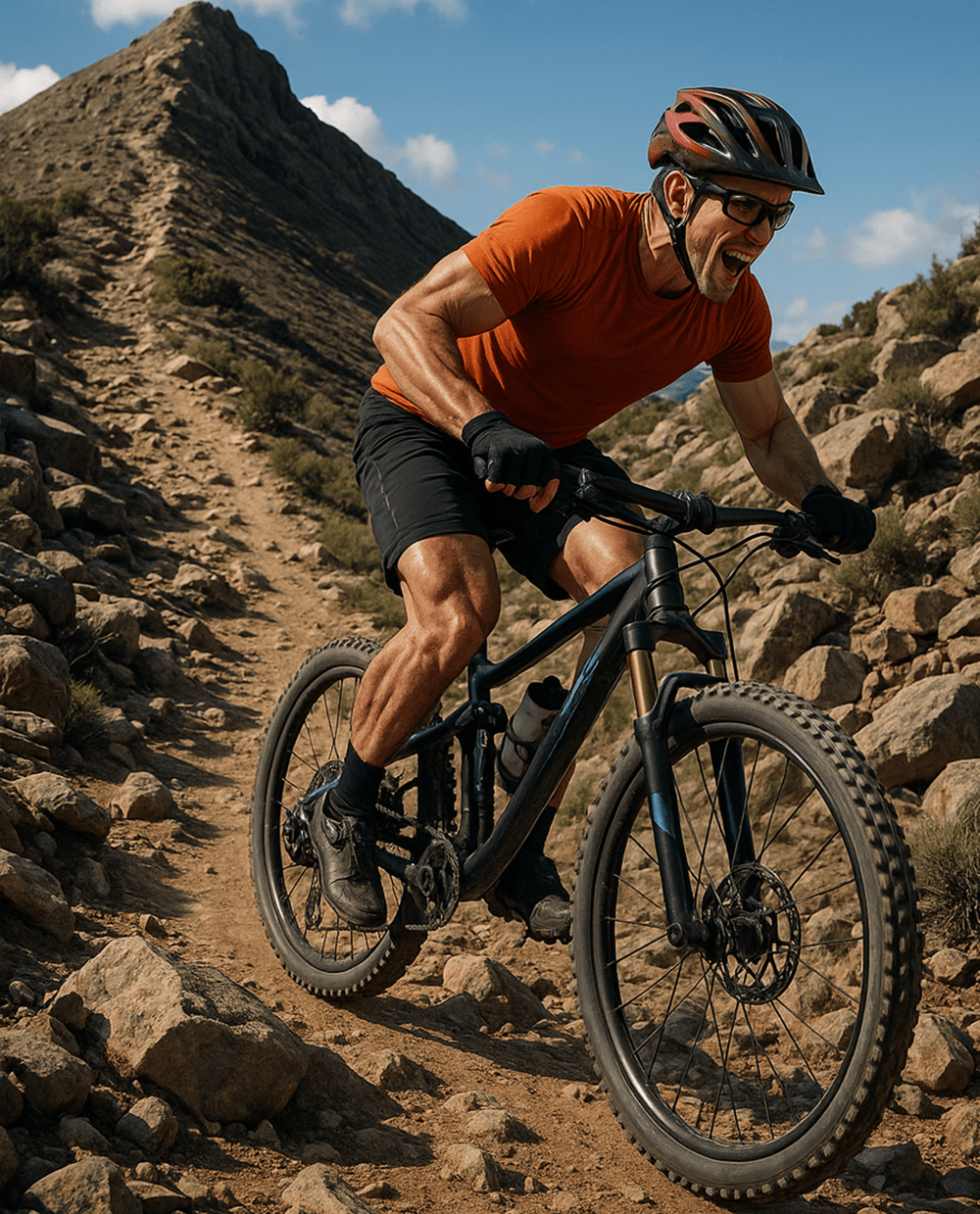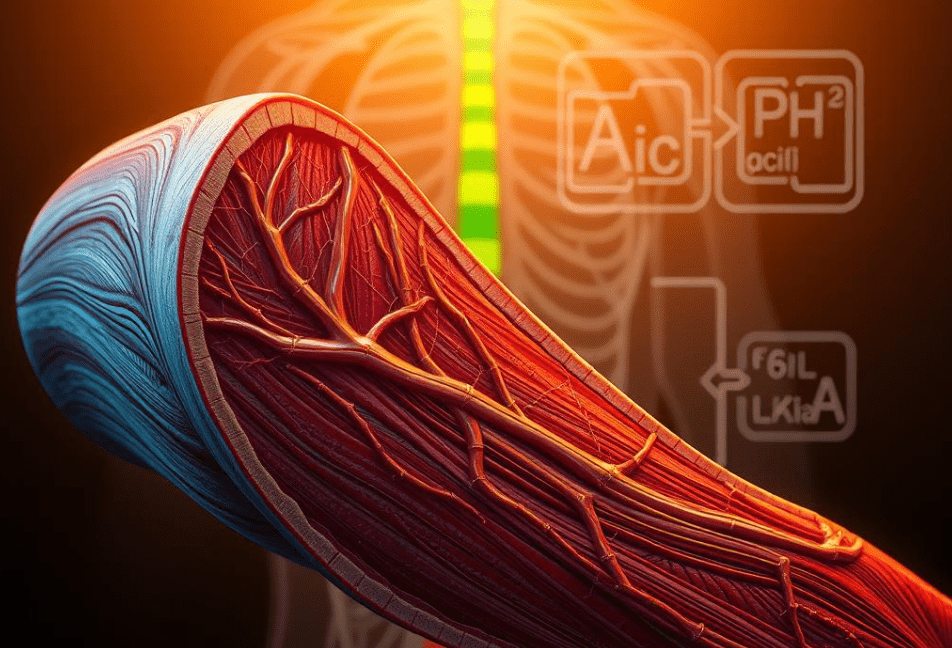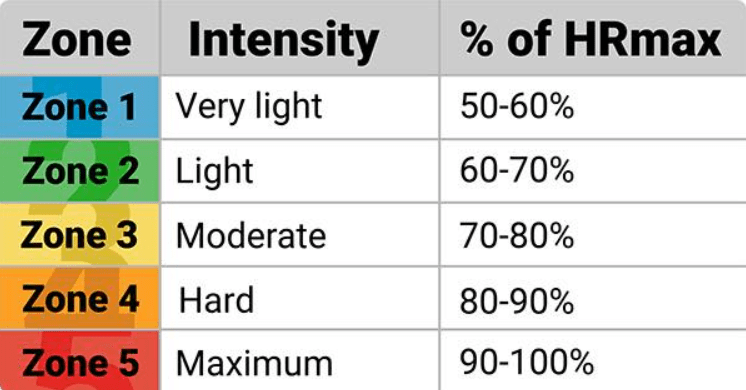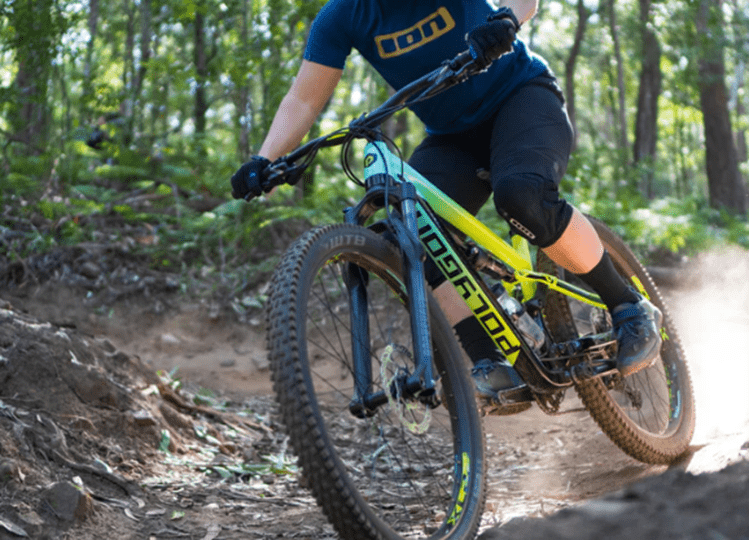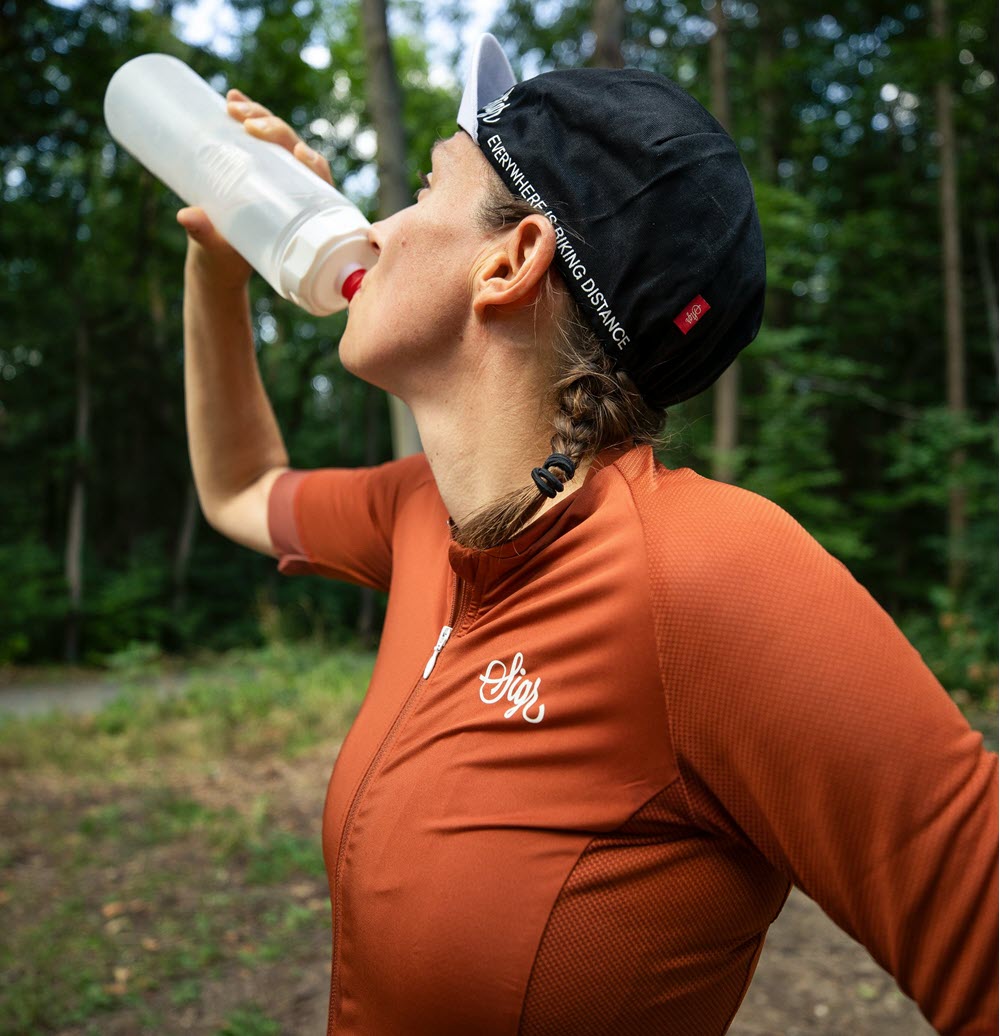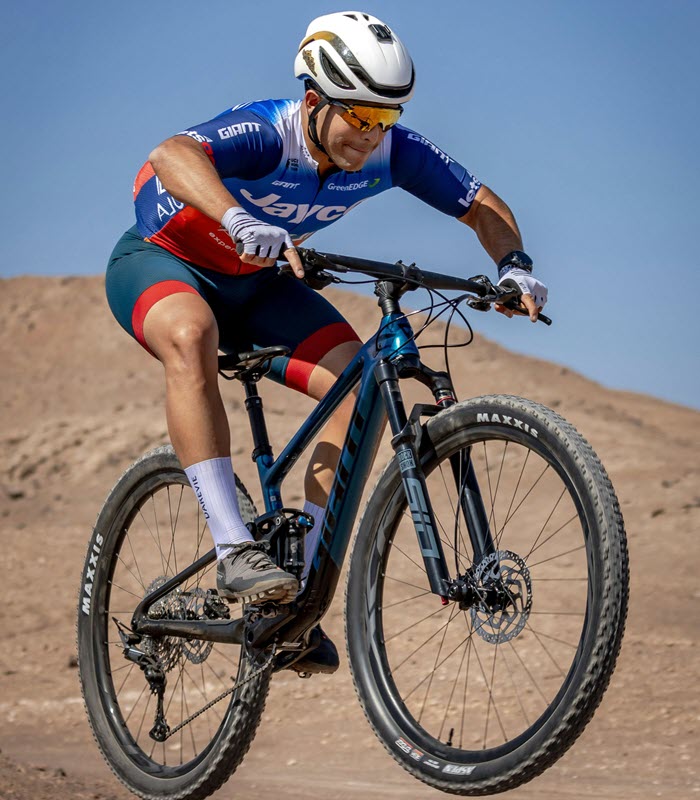Contents
- 1 How to Build Endurance for Mountain Biking: Science-Backed Training Strategies
- 1.1 1. Progressive Overload Principle for Trail-Specific Adaptation
- 1.2 2. Aerobic Base Development Through Zone 2 Mastery
- 1.3 3. High-Intensity Interval Training (HIIT) for Anaerobic Capacity
- 1.4 4. Fatigue Resistance Training with Negative Splits
- 1.5 5. Neuromuscular Efficiency Drills for Technical Energy Conservation
- 1.6 6. Periodized Nutrition Strategy for Fuel Optimization
- 1.7 7. Active Recovery Protocols for Sustained Progress
How to Build Endurance for Mountain Biking: Science-Backed Training Strategies

How to build endurance for mountain biking requires more than surviving long rides—it demands mastering relentless climbs, technical descents, and unpredictable terrain through cutting-edge sports science and proven trail-tested strategies. By optimizing physiological adaptation and mental resilience, these methods transform riders’ capacity to conquer elevation gains, navigate rocky descents, and sustain power output, converting self-doubt into triumphant “I crushed it” moments at every trail summit
1. Progressive Overload Principle for Trail-Specific Adaptation
Progressive overload systematically increases training stress to drive physiological adaptations critical for mountain biking endurance. This method balances volume, intensity, and technical complexity to mimic trail demands while minimizing injury risk.
Progressive Overload Framework
Increase ride duration or elevation by 10–15% weekly, prioritizing back-to-back long rides to emulate multi-day events. For example, transition from 90-minute base rides to 105-minute sessions the following week while maintaining 60–75% max heart rate. Combine this with 2–5% wattage increases on interval days to enhance anaerobic capacity without overtaxing recovery systems.
Metabolic Adaptations
Repeated endurance efforts stimulate mitochondrial biogenesis, boosting ATP production by 20–35% in type I muscle fibers. Concurrently, capillary density rises 12–18% over 8 weeks, reducing oxygen diffusion distance to muscle cells. These adaptations improve lactate clearance during technical climbs and sustain power output for 40–60% longer durations.
Periodization Strategy
Adopt a 3:1 loading-to-deload cycle:
Weeks 1–3: Gradually increase trail time (10%) and elevation gain (15%)
Week 4: Reduce volume by 30% while maintaining intensity
This pattern prevents plateaus in VO₂ max gains and allows neuromuscular recovery after technical descents.
Trail-Specific Implementation
Flowy singletrack: Sustain 75–85% FTP for 45–60 minutes to build muscular endurance
Technical climbs: Integrate 8–10% grade repeats at 90–100% FTP to enhance torque endurance
To determine FTP, please refer to this article: ( )
Descents: Practice hike-a-bike sections weekly to develop off-bike stabilization muscles
Monitoring Progress
Track power-to-heart rate ratios during standardized climbs:
<5% variation: Maintain current load
>5% improvement: Increase climb repeats or duration by 5%
Combine with monthly lactate threshold tests to quantify aerobic base development.
This strategic overload approach directly addresses how to build endurance by creating synergistic adaptations in mitochondrial density, capillary networks, and neuromuscular efficiency. The structured progression balances trail specificity with cellular recovery needs, enabling sustainable performance gains across 4–6 week training blocks.
2. Aerobic Base Development Through Zone 2 Mastery
Zone 2 training optimizes fat oxidation and mitochondrial efficiency, forming the metabolic foundation for sustained mountain biking endurance. This intensity targets physiological adaptations critical for multi-hour trail efforts without excessive fatigue accumulation.
Zone 2 Parameters and Monitoring
Target 60–75% of maximum heart rate or 55–70% FTP, maintaining conversational ability throughout. Use heart rate monitors or power meters to avoid intensity drift, keeping blood lactate below 2 mmol/L. Rides should last 2–5 hours, with 3–4 weekly sessions constituting 80% of total training volume.
Mitochondrial Biogenesis Mechanisms
Repeated Zone 2 exposure increases mitochondrial density by 20–35% through PGC-1α pathway activation. These organelles enhance ATP production efficiency, allowing 40% greater fat utilization during prolonged climbs. Concurrently, citrate synthase activity rises 15–25%, accelerating aerobic energy pathways critical for how to build endurance.
Fat Oxidation Optimization
At 65–75% VO₂ max, fat contributes 50–70% of energy production—double the rate of higher intensities. This spares glycogen reserves, delaying “bonking” by 60–90 minutes during technical descents. Training increases lipoprotein lipase activity by 30%, enhancing free fatty acid transport into muscle cells.
Capillary Network Expansion
Zone 2 stimulates angiogenesis, adding 4–6 capillaries per muscle fiber over 8 weeks. This 18–25% density increase reduces oxygen diffusion distance to 5–10 microns, improving steady-state power output by 12–15%. Enhanced endothelial function also lowers arterial stiffness, boosting cardiac efficiency.
Implementation Strategies
Terrain selection: Use fire roads or smooth singletrack to maintain consistent power
Cadence: 80–90 RPM optimizes muscle oxygenation without glycogen depletion
Fueling: Consume 30–45g carbs/hour to support fat metabolism pathways
Progress Evaluation
Test aerobic base every 4–6 weeks via:
Lactate steady-state: Power at 2 mmol/L lactate
FatMax assessment: Highest fat oxidation rate via metabolic cart
Heart rate decoupling: <5% drift over 3-hour rides indicates improved efficiency
This systematic Zone 2 approach directly addresses how to build endurance by enhancing the oxygen transport chain, substrate utilization efficiency, and cellular energy production. The combination of mitochondrial biogenesis and capillary proliferation creates a robust aerobic engine capable of sustaining technical trail demands for 4+ hours.
3. High-Intensity Interval Training (HIIT) for Anaerobic Capacity
HIIT alternates brief maximal efforts with recovery periods to enhance anaerobic power and lactate tolerance—critical for overcoming steep climbs and technical bursts in mountain biking. This method targets type II muscle fibers while stimulating aerobic adaptations, creating a dual-phase response that elevates both short-term power output and sustained endurance.
Physiological Mechanisms of HIIT Adaptations
Anaerobic glycolysis dominates during high-intensity efforts, producing ATP without oxygen while generating lactate. Repeated HIIT sessions upregulate monocarboxylate transporters (MCTs) by 20–35%, enhancing lactate shuttling from muscles to liver for gluconeogenesis. Concurrently, HIIT increases mitochondrial density through PGC-1α pathway activation, boosting post-effort oxygen debt repayment by 40–60%. These dual adaptations allow riders to sustain 120–150% FTP efforts for 30–90 seconds—the exact duration needed to clear root gardens or short punchy climbs.
HIIT Protocol Design Parameters
Effort Duration: 30-second to 5-minute intervals at 105–130% FTP
Work: Rest Ratios: 1:1 for lactate tolerance (e.g., 30s ON/30s OFF); 1:2 for power repeatability (e.g., 2m ON/4m OFF)
Session Volume: 15–25 minutes of total work time, avoiding glycogen depletion beyond 60% of stores
Example session:
Warm-Up: 20 minutes Zone 2 + 3×1-minute cadence bursts (100+ RPM)
Main Set: 6×1-minute at 125% FTP with 2-minute recoveries
Cool-Down: 15 minutes Zone 1 with high cadence
Technical Trail Implementation
Map HIIT efforts to trail features:
30-second intervals: Attack rock gardens or short kickers
2–3-minute efforts: Sustain threshold power on extended switchbacks
5-minute VO₂ max intervals: Maintain 105–110% FTP on fire road climbs
Periodization Strategy
Incorporate HIIT in 4–6 week blocks during base/build phases:
Weeks 1–2: 2 sessions/week @ 15–20 minutes total HIIT
Weeks 3–4: 3 sessions/week @ 20–25 minutes + 1 endurance ride
Deload Week: Reduce volume by 50%, maintain intensity
Metabolic Monitoring
Track adaptations via:
Lactate curve shifts: Reduced accumulation at given power outputs
Heart rate decoupling: <5% drift during 1-hour threshold efforts
Repeat sprint test: 8×30s sprints with 2m rests; target <10% power drop
This strategic HIIT application directly addresses how to build endurance by expanding anaerobic capacity while reinforcing aerobic foundations. The interplay between glycolytic enzyme upregulation and mitochondrial efficiency allows riders to recover faster between intense trail efforts, effectively delaying the onset of neuromuscular fatigue by 25–40% during technical descents.
4. Fatigue Resistance Training with Negative Splits
Negative splits—completing the second half of a ride faster than the first—train the body to sustain power output despite cumulative fatigue, a critical skill for technical mountain biking. This method enhances lactate clearance, glycogen sparing, and neuromuscular efficiency, directly addressing how to build endurance by delaying performance decay during long rides.
Physiological Basis of Negative Split Adaptations
Starting at 70–80% FTP conserves glycogen stores, limiting reliance on anaerobic glycolysis during early efforts. As blood lactate rises (typically 4–6 mmol/L by mid-ride), the body upregulates monocarboxylate transporters (MCTs) by 15–25%, improving lactate shuttling to less-fatigued muscles. Concurrently, fat oxidation increases from 0.5 g/min to 1.2 g/min over 3+ hours, sparing carbohydrates for high-intensity trail sections. These adaptations allow riders to maintain 85–90% FTP in final climbs despite prior workload.
Negative Split Protocol Design
Effort Structure: Divide rides into 60:40 segments, with the latter half 5–10% higher in average power.
Intensity Zones:
First half: 75–85% FTP (Zone 3)
Second half: 85–95% FTP (Zone 4)
Session Duration: 2–4 hours, with 30–45 minute tempo blocks (90–95% FTP) in the final hour.
Example session:
First 60%: 2-hour endurance ride @ 75% FTP on flow trails
Final 40%: 1.5-hour tempo effort @ 90% FTP on technical climbs
Trail-Specific Implementation
Map negative splits to terrain features:
Initial descents: Limit power to 60–70% FTP, focusing on technical skill retention
Mid-ride flats: Increase to 80–85% FTP, practicing cadence shifts (75–85 RPM)
Final climbs: Attack at 95–105% FTP, simulating race-finish scenarios
| Training Phase | Duration | Primary Focus | Key Workouts & Strategies | Performance Metrics |
| Base Preparation | 8–12 weeks | Aerobic base development | Long endurance rides (60–75% FTP) Tempo intervals Full-body strength training |
FTP +8–12% Heart rate drift <5% |
| Strength Endurance | 6–8 weeks | Muscular endurance | Over-under intervals Hill repeats Technical trail simulations |
20-min power +15–20% Descent speed +10% |
| Intensity Development | 4–6 weeks | VO₂ max expansion | VO₂ max intervals Microbursts Race simulations |
5-min power +18–25% Lactate threshold +0.5w/kg |
| Race Preparation | 3–4 weeks | Event-specific adaptation | Back-to-back long rides Heat adaptation Carb-loading drills |
Carb oxidation 1.2–1.5g/min Technical consistency <8% variance |
| Taper & Peak | 10–14 days | Recovery optimization | Reduced volume Intensity maintenance Flow-state sessions |
HRV +10% Sleep quality +15% |
| Transition | 2–4 weeks | Active recovery | Cross-training Mobility work Technical drills |
Movement variability Psychological recovery markers |
Periodization Strategy
Incorporate negative splits during base/build phases:
Weeks 1–3: 1 session/week @ 3-hour duration (5% power increase in second half)
Weeks 4–6: 2 sessions/week @ 4-hour duration (8–10% power increase) + 1 HIIT session
Deload: Maintain duration but reduce second-half intensity to 3–5% above first half
Metabolic and Neuromuscular Monitoring
Quantify adaptations via:
Lactate repeat tests: Post-ride levels <8 mmol/L after 4-hour efforts (vs. >10 mmol/L pre-training)
Glycogen sparing: Muscle biopsies showing 40–50% glycogen retention in type I fibers
Power decay rate: <6% drop between first/last 30-minute segments of 4-hour ride
This structured negative split approach trains the body to reallocate energy substrates efficiently—shifting from carbohydrate dependence to fat oxidation while preserving glycogen for decisive efforts. By systematically increasing late-ride intensity, riders develop the fatigue resistance needed to tackle technical features when cumulative strain peaks, a cornerstone of how to build endurance for backcountry epics and endurance races.
5. Neuromuscular Efficiency Drills for Technical Energy Conservation
Neuromuscular training enhances cycling efficiency by optimizing motor unit recruitment patterns and pedal stroke mechanics, directly reducing energy waste during technical trail sections. These drills target the brain-muscle connection to improve power application timing and muscle fiber synchronization—critical for sustaining endurance over variable terrain.
Neuromuscular Efficiency Fundamentals
The brain recruits motor units in a specific sequence during pedaling, with untrained riders activating 15–25% more fibers than necessary for a given power output. Drills recalibrate this pattern, reducing oxygen consumption by 8–12% at threshold intensity through improved inter-muscular coordination. Key adaptations include:
Type I fiber prioritization: Enhanced mitochondrial density (18–22% increase over 6 weeks) in slow-twitch fibers, boosting fat oxidation during endurance efforts.
Lactate shuttling efficiency: Upregulated monocarboxylate transporters (MCT1/MCT4) improve lactate clearance by 30–40%, delaying glycogen depletion during repeated climbs.
Single-Leg Isolation Drills
Performed at 50–60 RPM with one leg unclipped, these drills expose asymmetries in force production between limbs. A 2024 study showed cyclists completing 3×10-minute single-leg sessions weekly improved pedal smoothness by 19% and reduced quadriceps EMG activity by 14% at FTP. Implementation:
Warm-up: 20 minutes Zone 2
Main set: 3×5 minutes per leg @ 70–80% FTP, focusing on scraping motion through bottom dead center
Cooldown: 15 minutes high-cadence spinning (100+ RPM)
9-to-3 Pedal Stroke Emphasis
By consciously applying force only between the 9 o’clock (forward) and 3 o’clock (backward) positions, riders minimize energy wasted on non-propulsive pedal phases. This drill increases effective torque by 12–18% while reducing vastus lateralis activation by 22%. Advanced variations include:
Over-geared efforts: 50–60 RPM @ 90–95% FTP to reinforce hip extension mechanics
High-cadence bursts: 30-second spin-ups to 120+ RPM in light gears
Technical Terrain Integration
Map neuromuscular drills to trail features:
Rock gardens: Practice micro-adjustments via 10-second single-leg balance drills pre-ride
Switchbacks: Use 9-to-3 focus during 20-second out-of-saddle climbs to optimize power transfer
Descents: Alternate between seated/standing positions every 30 seconds to enhance stabilization muscle endurance
Adaptation Monitoring
Quantify progress through:
Pedal smoothness score: Calculated via power meter data (target >85/100)
Torque effectiveness: Ratio of effective vs. total pedal force (aim >35%)
Lactate repeatability: <15% power drop between 5×5-minute threshold intervals
This targeted neuromuscular approach directly addresses how to build endurance by converting wasted energy into propulsive force. The 9–22% efficiency gains from these drills allow riders to sustain technical efforts 40–60 minutes longer before glycogen depletion, while improved motor unit synchronization reduces perceived exertion by 18–25%. By refining the brain’s movement patterns, cyclists achieve more distance per calorie burned—a cornerstone of endurance mastery.
6. Periodized Nutrition Strategy for Fuel Optimization
A periodized nutrition strategy aligns energy intake with training demands, maximizing substrate availability and metabolic efficiency for mountain biking. This approach cycles carbohydrate, protein, and electrolyte intake based on workout intensity and duration, directly supporting how to build endurance while minimizing fatigue and promoting recovery.
Carbohydrate Periodization for Endurance
Carbohydrates are the primary fuel for high-intensity efforts, while fat oxidation dominates during lower-intensity, long-duration rides. Periodizing carbohydrate intake—consuming more on intense or long days, and less on recovery days—trains the body to efficiently utilize both energy systems.
During training: Ingest 60–90g of carbohydrates per hour for rides exceeding 2 hours, using a mix of glucose and fructose to maximize absorption and oxidation rates.
Pre-ride: Consume a high-carb meal (2–3g/kg body weight) 3–4 hours before long or intense sessions to saturate muscle glycogen stores.
Low-glycogen sessions: Occasionally train with reduced carbs to enhance fat metabolism and mitochondrial adaptations, but limit this to 1–2 sessions per week to avoid excessive fatigue.
Protein Timing and Muscle Recovery
Protein supports muscle repair and adaptation, especially after strenuous efforts.
Post-ride: Aim for a 3:1 or 4:1 carbohydrate-to-protein ratio within 30 minutes of finishing, with 20–30g of high-quality protein (such as whey or soy). This accelerates muscle protein synthesis and replenishes glycogen.
Daily intake: Maintain 1.4–1.8g/kg of protein per day during heavy training blocks to support ongoing recovery and adaptation.
Electrolyte and Hydration Management
Electrolyte loss through sweat can impair muscle function and endurance if not replaced.
During rides: Consume fluids with 500–750mg sodium per liter, especially in hot or humid conditions. Include potassium and magnesium for optimal muscle contraction and nerve function.
Hydration monitoring: Track body weight pre- and post-ride; aim to keep weight loss under 2% to prevent performance decline.
Fueling for Technical Terrain
Technical sections and sustained climbs increase energy demands and sweat rate.
On-trail nutrition: Use easily digestible, portable options (gels, chews, rice cakes) to maintain blood glucose and cognitive sharpness during technical descents and climbs.
Caffeine: 3–6mg/kg taken 30–60 minutes before key efforts can improve focus and perceived exertion, but avoid late-day doses to protect sleep quality.
Monitoring and Adjusting
Evaluate your nutrition strategy by tracking:
Energy levels: Consistent power output and reduced bonking during long rides indicate effective fueling.
Recovery: Rapid muscle soreness resolution and strong performance in back-to-back sessions reflect optimal protein and carb timing.
Hydration: Clear urine and stable post-ride weight suggest adequate fluid and electrolyte intake.
A periodized nutrition strategy is fundamental for how to build endurance in mountain biking. By matching fuel intake to training demands, you enhance both immediate performance and long-term adaptations, ensuring you can tackle long climbs, technical sections, and multi-hour rides with sustained energy and resilience.
7. Active Recovery Protocols for Sustained Progress
Active recovery accelerates muscle repair and metabolic replenishment while maintaining neuromuscular patterning, a critical yet often overlooked component of how to build endurance. These protocols optimize the balance between training stress and physiological regeneration, enabling consistent progression without overtraining.
Physiological Mechanisms of Active Recovery
Low-intensity exercise (Zone 1) increases blood flow by 150–200% above rest, enhancing lactate clearance rates by 40–60% compared to passive recovery. Concurrently, it stimulates mitochondrial biogenesis through AMPK pathway activation, boosting ATP production capacity by 12–18% over 4–6 weeks. This process also upregulates fatty acid transporters (FAT/CD36), improving fat oxidation during subsequent endurance efforts.
Contrast Therapy Implementation
Alternating hot (40°C/104°F) and cold (10°C/50°F) exposure enhances parasympathetic nervous system activation, reducing cortisol levels by 25–35% post-ride. Protocol:
Post-ride: 3 cycles of 2-minute hot shower + 1-minute cold immersion
Non-training days: 15-minute infrared sauna + 3-minute ice bath

Compression Garment Protocols
How to build endurance for mountain biking requires integrating evidence-based recovery strategies, beginning with graduated compression garments (15–20 mmHg) worn for 2–4 hours post-ride. This intervention reduces serum creatine kinase levels by 30%81418, accelerating myofibrillar repair by enhancing venous return and metabolic waste clearance1518. When combined with 20-minute leg elevation sessions—which decrease interstitial fluid accumulation by 50–70%6910—riders mitigate exercise-induced edema prevalent after technical descents1620. The synergistic effect of compression and elevation preserves muscle contractility1418, enabling faster recovery between high-intensity training blocks critical for endurance adaptation720.
This optimized recovery protocol directly supports endurance gains by minimizing cumulative muscle damage518, allowing athletes to maintain consistent training volumes while reducing injury risk716. The mechanical compression enhances oxygenated blood flow to fatigued type I muscle fibers1518, while elevation counteracts gravitational fluid pooling that impairs nutrient exchange in capillary beds91016. Together, these strategies create a physiological environment conducive to mitochondrial biogenesis and aerobic capacity development720—cornerstones of endurance performance.
How To Build Endurance With Sleep Optimization
Deep sleep (N3 stage) increases growth hormone secretion by 200–300%, critical for tendon/ligament repair. Strategies:
Temperature regulation: 16–18°C (61–64°F) bedroom temperature
Circadian alignment: 10-minute sunrise-mimicking light exposure upon waking
Glycogen resynthesis: 40g casein protein + 80g carbs pre-bed
Zone 1 Active Recovery Rides
Perform 45–60 minutes at 50–55% FTP with 90–100 RPM cadence to:
Flush metabolic waste: 3x faster lactate clearance vs. rest
Maintain capillary density: 8–12% greater endothelial function vs. complete rest days
Reinforce pedal efficiency: 5–7% improvement in torque effectiveness over 3 weeks

Adaptation Monitoring Metrics
HRV (Heart Rate Variability): >70ms RMSSD indicates recovery readiness
Morning resting HR: <5% variation from baseline
Muscle oxygen saturation (SmO₂): >75% during Zone 1 efforts
This systematic recovery approach directly addresses how to build endurance by converting physiological strain into sustainable adaptation. The synergy between enhanced waste clearance, protein synthesis, and neural recovery allows riders to increase training density by 20–30% while reducing injury risk—key for mastering back-to-back epic rides and multi-stage events.
Conclusion
How to build endurance in mountain biking is a mosaic of physiological adaptation, strategic fueling, and intelligent recovery. These seven strategies—rooted in pro training methodologies and sports science—create a synergistic system where aerobic capacity, muscular resilience, and technical efficiency converge. By prioritizing consistency over intensity and recovery over rigidity, riders can sustainably push their limits, transforming grueling rides into exhilarating achievements. The trail doesn’t get easier; you get unstoppable.
 |
 |
We are an Amazon affiliate and earn from qualified Amazon purchases with no cost to you. This is for ANY product that you purchase through our links.
If you enjoyed learning about this week’s featured bicycle, don’t miss out on more classic bike goodness! Visit our website at classicjapanesebicycles.com for an extensive collection of timeless Japanese bikes and their unique stories. Plus, check out our YouTube channel, Bicycle Restoration Man, for detailed restoration videos and showcases of our finished projects. Subscribe and join our community of bike enthusiasts!


